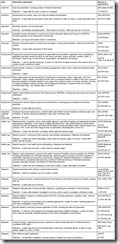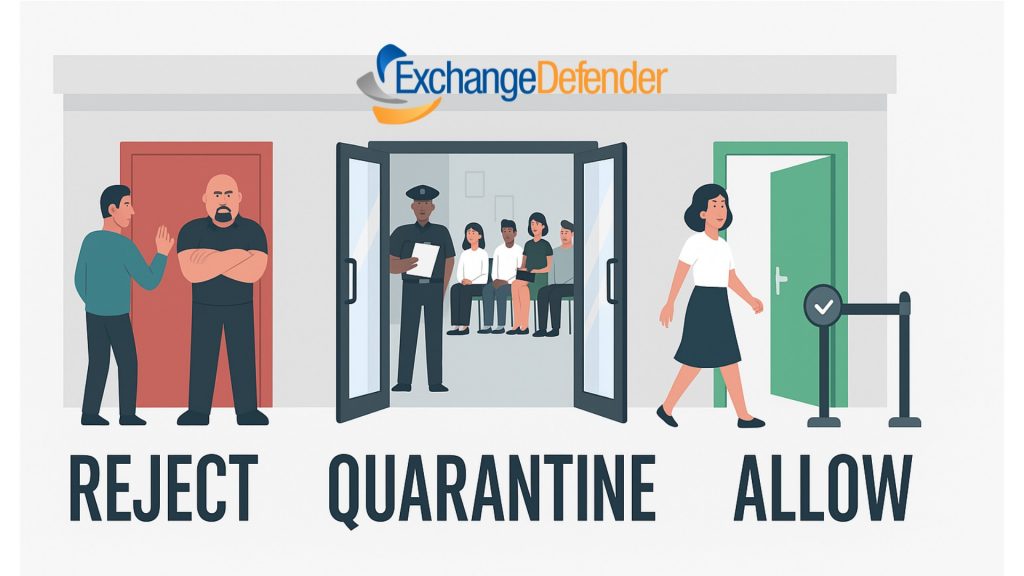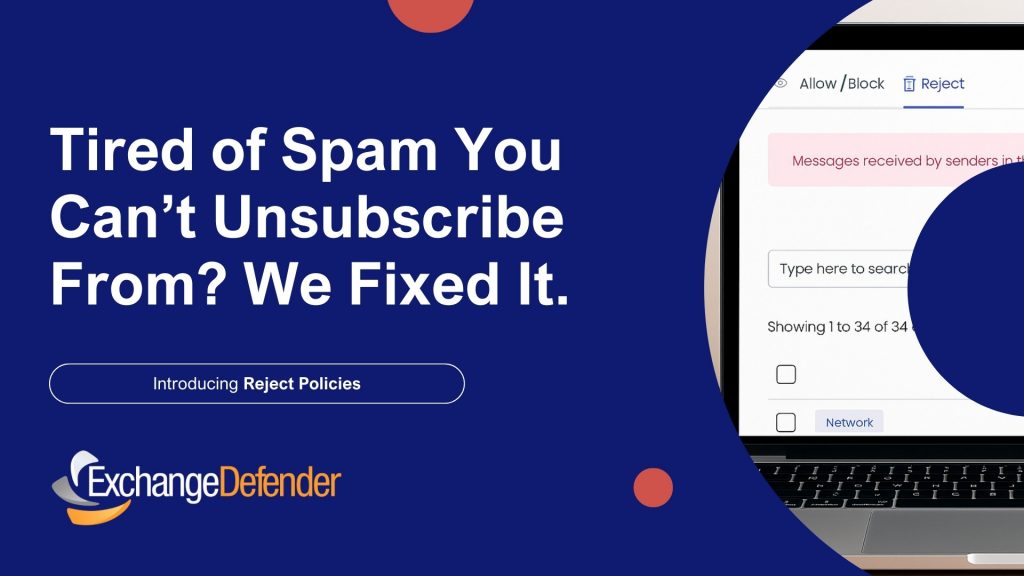The Truth About Cloud Services
If you attended our last webinar (will be posted for download in our portal next week) you already know what I’m going to say: Winning in the cloud has nothing to do with technology and everything to do with good customer service. The technology of implementation, scalability, redundancy, system capacity and long term legacy use are terms both distant and hard to differentiate for most clients from SMB to enterprise: If you meet their compliance requirements the question of whether you will make money in the cloud or not depends solely on your ability to set the correct expectations and deliver the non-IT part of the service effectively.
Good news is that we are here to help!
But is it smug to believe that you actually need help? When we talked to our partners about cloud adoption the answer surprised even us: not at all and to be honest we’d rather have our weekends back. Truth behind cloud deployments is that the up front investment in time and planning is expensive, messy and clients do not like downtime – forcing IT Solution Providers to execute complex migrations over weekends, holidays and provide ongoing support for unpredictable surprises that always come up.
Truth about the cloud is that the deployment of a cloud solution is 1% technology, 99% proper project management and customer communication. It’s the 99% of the prep work and followup that is keeping most solution providers from seriously taking advantage of the cloud solutions because without help the ability to scale to the cloud is the same as the ability to scale to another inhouse solution.
Over the next two weeks ExchangeDefender is dedicating significant resources to help you navigate what we’re internally calling Napalm Cloud – rapid fire cloud service deployments for Exchange, SharePoint, Lync, ExchangeDefender, LocalCloud, LiveArchive and all the project management, communication and service that goes along with it.
We will be posting several articles, blogs, webinars and guides that we use at ExchangeDefender to deliver our Managed Messaging service in hopes of giving you an idea of how these projects happen consistently, successfully and with a great deal of client satisfaction.
I hope you join us as we discuss these topics because they are of a great importance to your success and profits in the cloud. Money in the cloud will not be made on subscription revenues, the “free” model has effectively assured that, so the greatest opportunity for solution providers is in providing a peace of mind and predictability when it comes to technology – today, tomorrow and years from now.
Can you say that you deliver that? Hopefully over the next two weeks we’ll help you get closer to yes.
Sincerely,
Vlad Mazek, MCSE
CEO, Own Web Now Corp
(877) 546-0316 x500
Using LiveArchive to differentiate yourself in the marketplace
Picture this- You get to a prospective client’s site, you go in, you’re prepared, confident you will win the sale, but you come out and no sale. You ask yourself, what went wrong? Was it my presentation? Was it me? Was it them? Was it the pricing? Some business owners may not be willing to tell you why they went with another solution, but knowing why is irrelevant. What you really need to know is how to correctly position the product or service. Once you learn how to do this your chances of losing out in the future will decrease dramatically. To ensure that you have the competitive advantage you will need to stand out from the rest, show your customers you’re unique. Once you help your clients understand that you’re offering something no one else can offer you will make the sale! So how do you convey that to your customers?
Perhaps the most important feature and biggest competitive advantage of ExchangeDefender is LiveArchive. LiveArchive is the business continuity piece of ExchangeDefender. What happens when the client’s server goes down? They are unable to send or receive email. We live in the technological age and majority of business is conducted through email, so no email means loss of business; no one likes to lose money. With ExchangeDefender’s LiveArchive your clients will never have to worry or experience this again. With other solutions your clients would not be able to access their email during an outage, but with ExchangeDefender you are providing your clients access to their emails through LiveArchive, this advantage will set you apart from everyone else.
Another advantage of LiveArchive is that it’s instantaneous. Your clients will be able to resume service automatically and everything will run as it normally would. It’s simple, you just open a web browser to https://livearchive.exchangedefender.com or (https://la.livearchive.exchangedefender.com) and continue where you left off so there is nothing to tweak/install/configure.
Finally, ExchangeDefender’s LiveArchive lets you stand out because unlike our competitors we sync mail, contacts and calendars. We do so for a year so you don’t have to worry about missing critical pieces of information to do your job. This is truly a Business Enterprise solution like no other and that is what will differentiate you from your competition.
Comparatively speaking, nobody else has this service so it’s easy to explain why LiveArchive as a hosted solution makes a giant difference. Another piece of the comparative puzzle is when customers find something they believe is similar, but know this is not an apples to apples comparison. If your client does happen to find a “comparable” solution, make it known to them that other solutions partner with a third party- so what does that mean for them? It means that your client is placing trust in a company that doesn’t trust their company and/or technology so they put it in the hands of a third party. Typically what happens in that case is the solution is purchased and IT Providers and clients come to find out the solution doesn’t work as it should and it happens just when the client is depending on it most. If you or your clients were in a situation like this the last thing you would want to find out is that they’re unable to access their email because their provider’s provider is down.
In addition, LiveArchive is built in with the ExchangeDefender package so unlike your competition we do not charge for basic or extended storage. Lastly, convey to your clients that your solution stands out by offering mail sync. Competing companies do not sync mail back to your server once the service comes back up so you effectively lose mail. Even worse, some don’t give you live access to email while you’re down, they just offer “mail bagging” or “mail queuing” which keeps the mail from being lost but while you’re down – you do not have the ability to send or receive mail.
LiveArchive is just one of the many features that give you the advantage over your competition. For additional tips and selling points, check out these great blogs!
If you have any additional questions, please feel free to contact me directly at: anastasia@ownwebnow.com or 877-546-0316 x 739.
Data Retention: Are Your Customer’s in Compliance?
Data retention and compliance archiving requirements can be a frustrating and easily misunderstood topic, especially when discussing these requirements with customers. What should be understood is that almost every business and organization falls into some type of retention requirement. Whether it is a business that accepts credit cards, or an organization that has employees, a company that deals with financials, or a shop that collects customer information; all are required to maintain records for a certain amount of time to stay in compliance with local, state, and federal laws.
Email, being a significant form of communication and means of transferring data, falls into the retention policy of most laws that require retention of “records.” This makes email compliance archiving a required solution for most businesses.
Beyond regulatory requirements, e-discovery and legal discovery rules mandated by the federal courts, requires compliance with these rules and provides specific limited time to obtain requested records. The cost of e-discovery without a proper archiving and retention policy can be astronomical, considering time and forensic requirements.
Certain industries as well as local, state, and federal governments are highly regulated through legal compliance such as HIPAA for health and patient records, FINRA for financial information, IRS, SOX, SEC, The US Patriot Act, and thousands more. Though other industries are not as heavily regulated, with the vast amount of regulatory laws that are on the books, just about every business is required to comply in one way or another.
 The following example is just a small sample of the thousands of data retention requirement laws that are currently in effect.
The following example is just a small sample of the thousands of data retention requirement laws that are currently in effect.
MSP’s and IT solution companies have a significant opportunity to educate and provide compliance and archiving solutions to ensure customers are meeting necessary requirements. The opportunity provides for adding an additional recurring revenue stream for hosted cloud-based archiving and compliance products, as well as potential project revenue for designing and implementing a company wide retention policy.
While there are hardware-based solutions on the market, the cost of hardware, licensing, installation, and maintenance makes them a much harder sell to customers. Comparatively, cloud-based solutions offer all of the protection, required access, and security without upfront costs, maintenance requirements, and storage limitations.
Though there are a number of cloud-based vendors to choose from, it is important to understand the differences between compliance and archiving solutions from a provider like ExchangeDefender and other cloud solution providers. ExchangeDefender will provide its partners with a Business Associate Agreement also known as a (BAA), which is required for HIPAA compliance. Other providers are quick to point fingers and often times resell 3rd party solutions branded as their own providing little recourse and protection for their partners. As well, some other vendors are not providing solutions that are hosted utilizing SSAE16 standards and auditing practices and procedures.
Compliance and archiving solutions are becoming a necessary requirement for all businesses. As an MSP or IT Solution provider, standardizing on an offering that includes this critical component is an important step in providing the best protection and service for your customers. Whether a business is micro, small, medium, or an enterprise-sized company, the threat of litigation, government compliance, or imposed fines is always a possibility. On top of all of this, providing archiving and compliance as a standard solution for customers provides an additional layer of disaster recovery by providing offsite and hosted availability to customer email information.
Since very few businesses are in compliance, the opportunity to present and provide solutions to customers is great. Begin educating by marketing compliance requirements through typical marketing outlets, discussing these issues with customers at Quarterly Business Reviews, and including compliance and archiving solutions built into managed service deployments. By providing this level of service you will not only be protecting your customers, but you will be protecting yourself as their IT provider.
How do you make sense of a unified solution?
 Many MSPs pride themselves on putting together their own custom stack for their customers because they like Company X for this product and company Y for that product. However, when you have multiple platforms interfacing with either other you’re leaving the door open for possible issues. Our recommended approach is a unified platform.
Many MSPs pride themselves on putting together their own custom stack for their customers because they like Company X for this product and company Y for that product. However, when you have multiple platforms interfacing with either other you’re leaving the door open for possible issues. Our recommended approach is a unified platform.
The biggest problem with combining multiple vendors across an offering starts when these third party applications aren’t playing well with each other and you need help to resolve an issue. We’ve all been part of those conversations unfortunately, where you have one vendor refusing to work with another or they are just not putting forth the effort you’d like to see. This is more common place than we’d like to admit. The root cause isn’t that people don’t want to be helpful. The problem that arises that once your data leaves the first provider’s platform, they’re now looking at the great unknown. And that’s IF the other party wants to help, because there are times when you’ll engage a vendor on an issue and you’ll be stonewalled instantly once your question involves another provider.
So what’s the proposed solution?
A unified platform that you can trust.
You already choose ExchangeDefender for arguably the most important piece of technology to your clients, their email. But we offer more. You can use our ActiveDirectory syncing software (XDSync) to maintain password synchronization between their desktop logins, their email, and the ExchangeDefender products. Upon first glance that doesn’t sound like much, that’s because folks forget we’re more than an anti-SPAM company.
Now you have a synchronized password for your clients:
Desktop
Cloud Storage
SPAM Quarantine
Web Sharing
Business Continuity with Contact and Calendar Sync
Compliance Archiving for eDiscovery and long term email storage
Mobile Applications
Those are the positives for your client. If that’s not enough consider this. Next time there’s something up with your client’s Compliance Archive or Business continuity routing, what happens?
You call us, we will resolve it. We will resolve it quickly, efficiently and with as little hoop jumping as possible.
What happens if your email goes down and you don’t know what to do? You call us.
What happens when your clients are having a cloud storage issue? You call us.
Offering our unified platform will simplify your client’s access to technology and your support process. If you have any problems with our services you can always call us. Not an overseas partner of a company we just acquired. We are always here, and more importantly, here for you for our entire platform.
Does this sound good? It should, this is why your clients hire you: they want a single provider they can turn to that can make their IT problems disappear. When there is a problem they count on you and it’s easy to see why you need someone to count on as well.
Building a Sales Case for Encryption
If you’re running an I.T. business trying to understand HIPAA compliance as far as email security is concerned, you’re not alone. I.T. shops are scrambling to find solutions for their clients that are “HIPAA Compliant.” But what exactly does that mean? For the most part, HIPAA compliance states that you need a set of policies and procedures in place on appropriate use and safeguarding protected health information or PHI, processes to validate those policies and procedures are followed, and supporting technology to facilitate secure and protected communications. In my opinion, it does a very poor job at defining with any reasonable detail as to “how” to protect PHI in email form. The Privacy Rule requires a covered entity participating in the exchange of electronic protected health information (ePHI) to have in place appropriate administrative, technical, and physical safeguards to protect the privacy of PHI, including practical safeguards to protect against any intentional or unintentional use or disclosure in violation of the Privacy Rule.
Furthermore, the standard for transmission security (which can be read here: http://www.hhs.gov/ocr/privacy/hipaa/administrative/securityrule/techsafeguards.pdf) has been updated to enforce the use of encryption. It states that covered entities police themselves in regards to the use of public networks, possess a solution to protect ePHI as it is transmitted, and document that solution. The Security Rule goes on to state that it is perfectly acceptable to transmit ePHI to be sent over a public network as long as it is “adequately protected.”
If you’re not confused yet, I salute you. What I have gathered is that HIPAA = security + training + polices + procedures–all of which “should be” monitored and audited for compliance. It is the equivalent of saying, “You shouldn’t speed because you might get a ticket.” In this case, you should provide some reasonable level of security, train your staff and end-users on said security, create policies and procedures to comply with HIPAA guidelines. Otherwise, that “speeding ticket” can have a minimum fine of simply a warning to a maximum penalty of $1.5 million dollars with the possibility of up to 10 years in prison–depending on the severity of the breach (see: http://www.mcguirewoods.com/Client-Resources/Alerts/2013/2/HIPAA-Omnibus-Final-Rule-Implements-Tiered-Penalty-Structure-HIPAA-Violations.aspx).
It’s my opinion that the goal here is to protect the transmission and storage of sensitive patient data while trying not to impose a decisive method on how that data should be protected. While I am not claiming to speak for any government official; in a way, I believe the government body is saying, “Listen, be smart. Do everything in your power and ability to protect data in transit and the storage or that data. And if we deem there to be a compliance issue, we will weigh that violation and determine a suitable penalty.” While there’s a veil of ambiguity that shrouds the strategy or implementation of ePHI compliance, you have to admire any body of government that takes an approach of flexibility–allowing the entities to take a best practices approach to the technology that is available. In fact, as previously mentioned above, technology (or the security of that technology) is only a piece of the HIPAA compliance equation. However, since is mainly a technology blog, let’s talk about how ExchangeDefender’s Corporate Encryption can help you become HIPAA compliant with your clients.
ExchangeDefender Corporate Encryption highlights four major are of concern with thinking about email security:
• Pattern Matching – Pattern-based encryption that can detect credit card numbers, social security numbers, dates of birth and other account-specific data.
• Lexicon Keyword Matching – Lexicon dictionaries can contain words and word patterns that can trigger encryption mechanisms and protect from data leakage.
• Corporate Encryption Mechanisms – Corporate encryption mechanisms can automatically encrypt messages or forward the contents to the administrator for the corporate review.
• Comprehensive Reporting – Comprehensive reporting of all email activity as well as a Compliance Officer (CO) reporting with search capabilities provide proof of regulatory compliance and simplify reporting.
ExchangeDefender Corporate Encryption provides an easy and seamless way for organizations of all sizes to implement content protection and comprehensive control over information being sent through email. Powered by ExchangeDefender, Corporate Encryption complies with the SOX, HIPAA, SEC and local government requirements for information encryption while providing powerful audit and policy wizards to meet organizations unique goals. We provide all these features without you having to invest in expensive equipment and colocations fees. If you have additional question about our Corporate Encryption service or any of our ExchangeDefender solutions, give us a call at 877-546-0316. We will be more than happy to assist you in building a solid business solution portfolio.
Benefits of Cloud Computing
In today’s traditional small business office, the best managed in-house servers are still a liability. Unmanaged in-house servers are time bombs. Why do I say this? Because the hardware used to manage your business is still onsite. From my experience, most hardware is unfortunately sitting unsecured in a closet that also houses cleaning products and printer toner or somewhere under a desk with a Post-It note on it stating, “Do Not Power Off.” With LOB applications and other SMB services such as hosted email, compliance archiving, and file sharing in the cloud; your business has nothing onsite to own, update, maintain, or repair. This makes your availability and accessibility to data and services accessible from any Internet connected device.
Availability of Data and Services
No matter how redundant you think your onsite technology is, your efforts will pale in comparison to the most basic Tier 1 data center requirements, standards, and uptime. Consider this: There are 525,800 minutes in a year. Tier 1 data center are required to maintain an uptime of 99.671%, or 523,870.78 of those 525,800 minutes. That means that the lowest tier data center (Tier 1) cannot exceed a downtime of 1,729 minutes annually. For those of you converting the number into hours or scared of math, this equates to no more than 28 hours a year of downtime. While you may be thinking a day plus 4 hours is a lot of downtime, the majority of this time is scheduled maintenance that would be needed anyway regardless where your equipment was located. Even with a minimal guaranteed uptime of 99.6%, your company is still minimizing downtime by utilizing cloud services.
What if the onsite equipment started to fail. If you are a company with no one on staff dedicated to technology issues, you now have to add additional hours to your downtime to locate and schedule professionals to diagnosis, repair, and test a fix. This doesn’t include any additional hours for physical equipment that may need to be order to complete the repair. If you’re an I.T. professional, wouldn’t it be great not to have to worry about monitoring, maintaining, updating or repairing in-house servers on a consistent basis? Imagine the time you could then dedicate to working on your business.
Accessibility of Data and Services
I, like many others I know in various industries, work remotely. There are times when I’m summoned to the office for special events, meetings, or conferences; but other than that, I work in the cloud. From my home office and using something as small as my iPhone, I can access tickets in our support portal, make and receive business calls, send and receive company email–and if necessary, even compose a blog post. Although the majority of time is spent performing these activities on my iMac strictly out of comfortability, point being our company can operate anywhere with minimal technology. Traditional desktop and LOB applications are being redesigned to operate in a cloud environment–thus breaking the symbiotic relationship between software and desktops/servers. With cloud computing, gone are the days of blue screens, random restarts, and incompatibilities between OS and applications.
If you are a Trusted Advisor in technology for your clients, you can no longer afford to carry around the liability of maintaining data or services on a retiring platform. The wheel has been created. The cloud is here to stay. You can’t continue ignoring the future and pushing your clients on technology you are only familiar with, i.e. SBSers. You have to relinquish the “Admin” ego and implement the best solution for your clients need. Today, those needs no longer involve bloated expenses for hardware purchases. By offering cloud services, you can offer your clients a worry-free environment where their data is available and easily accessible.
Global Businesses are integrating Cross Platform Communications but are they ready?
Businesses globally are adopting cloud services and solutions to merge communications across multiple platforms. The days of convoluted practices to remotely access information, documents, and people are long gone and mobile communications with tablets, smartphones, laptops, and even consumer appliances are now accessible from anywhere, at any time.
The biggest problem with this new frontier of technology accessibility is the fact that it is run very much like the “wild wild west.” There are not yet business standards or practices for the solutions, applications, communications platforms, or security, which creates what some might deem as a lawless environment for mid-sized businesses that once held ultimate control over their networks.
Though this description may seem extreme or far-fetched, the reality is that it is not that far off, especially given the state of mobile device adoption in the workplace or what some might call BYOD.
ExchangeDefender is providing ways for VAR’s, MSP’s, Master MSP’s, Solution Providers, Cloud Brokers, and distributors to provide customers with a set of standardized business practices and solutions, that can help clean up the mobile and technology driven wild wild west.
This has been accomplished by identifying key areas in which businesses today require standardization and best practices to control and manage their internal networks, communication, and documents through cloud-based solutions.
These are:
Communications – Email, messaging services, file sharing, collaboration, and content management solutions.
Communication is the lifeblood to any business. By standardizing on a hosted exchange solution, businesses can rest assured that they will have access to their information from anywhere in the world at anytime. This coupled with Sharepoint, Lync, and CloudShare services provides a complete email and messaging solution that can be provided, to give customers business grade messaging across all device platforms.
Security, Business Continuity, and Compliance – Antispam, encryption, compliance, archiving, and backup solutions.
The importance of keeping communications secure, free from outside eyes, constantly backed up, and available when needed is key to any business practice. Some businesses require specific levels of compliance in order to maintain legal requirements. Having this information can significantly increase an IT companies credibility by assuring that their customers meet all of the compliance, archive, and ecryption requirements set forth by their industry.
Infrastructure – Dedicated Servers, Virtual Servers, colocation services, and Web hosting.
Cloud infrastructure solutions provide businesses with cost effective ways of providing global resources without the high costs of hardware and maintenance. Virtual servers significantly decrease energy consumption and overhead costs, while increasing productivity, redundancy, security, and availability for workers across multi office or single location deployments.
As medium sized businesses continue to flourish and remote offices, mobile workers, and interconnected personnel continue to thrive; cloud services will be at the frontline of standardization practices for business.
ExchangeDefender partners will remain ahead of the game and able to provide all of the necessary solutions to take away any concerns customers may have about having a secure global network, whether it is a traditional, mobile, or hybrid network.
Having discussions and marketing about the growing wild wild west of technology and rogue nature of introducing mobile solutions into environments must be done now. Waiting for a breach or security issue to inform customers of readily available solutions may inadvertently cause downtime, high risks, or worse yet cost business revenues.
For this reason it is important to thoroughly study the types of issues that are facing medium sized companies, as well as creating awareness around solutions that can overcome any potential issue today. With tablets, mobile, and alternative devices connecting to networks everyday, the influxes of unknowns are overwhelming to network managers, so education becomes the key. Utilize your ExchangeDefender team to help point you in the right direction and feel free to ask questions if there is something you don’t understand.
Large Scale Migration
 The most important aspect of a large scale migration is communication. This can make a migration that either turns you into a trusted company relationship or the most recent “IT guy” that was fired by that company. There is a delicate balance that you must preserve between the needs of the technology and the needs of the business owner. The best way to do that is to be as meticulous as possible with your communication process.
The most important aspect of a large scale migration is communication. This can make a migration that either turns you into a trusted company relationship or the most recent “IT guy” that was fired by that company. There is a delicate balance that you must preserve between the needs of the technology and the needs of the business owner. The best way to do that is to be as meticulous as possible with your communication process.
Prep work, communicate.
The first thing you must do is map out an initial time line and start testing the process. This time line will start solely based on the IT departments recommendations. These recommendations are generally based on the hardware or support life cycles and the length of time to complete it. Once you have that sorted out, you probably want to add another two weeks to a month of notice and relay that information to the decision makers at the affected company.
Test, communicate.
Once you’ve received a response, you make adjustments as necessary to your schedule and begin a live test where permissible. We also see excellent guides on the internet on how to do any migration imaginable; the most important point to consider is that no two are alike. So you found a frame work to use on the internet, so you have to take the next step. What we typically do is use test mailboxes, we migrate them individually, and then we move them as batches, repeatedly. The bottom line is this; the more work you do before the migration the less likely you will have to pay overtime for a botched migration.
Execute, communicate, then communicate again
Once you’re satisfied, you reach out to your clients again and confirm that you’re ready to start as you previously agreed. This is where the process will vary when dealing with end users versus an IT partner. We can get away with the following notices: an announcement, a reminder, a start, a mid-point, a completion and a couple of follow-ups. We are about to do this due to the fact that we’re dealing with top notch technology professionals. However, with end users you have to have a more controlling approach, depending on the size of the business, you may opt to have everyone come into the office and leave their mobile devices with you for the migration, or you can do appointments. The most important thing in the process is to check as often as your staffing will allow it, that everything is going smoothly and that the expectations you set are being met. I would even advise a follow up call at 1 week and 2 weeks out to pick up the “slow to report issue” folks.
Taming Your Email
If I ever opened Outlook in the mornings and saw a slew of emails (unread or read) in my inbox, I’d get depressed. Seriously, how can one not feel anxious when seeing (1,323) unread messages sitting in their inbox? If you need a full searchable, secured, and compliance archive solution; then take a look at our long-term Compliance Archive service. Otherwise, take a look below at some of the things I do to prevent email from taking over my life:
• Operate a Zero-Sum email policy. If an email arrives in your inbox, address it, file it, or delete it. In simpler terms, my inbox is not a storage folder–it’s an inbox.
• Never use your Deleted/Trash folder as a storage folder. If you need to file that piece of mail somewhere other than your inbox, then create a folder for that specific purpose. Your deleted folder should be empty most of the time. In fact, you can configure most email applications to remove all contents in the Deleted/Trash folder when you exit the application. Those still reading this probably just laughed at me for suggesting that an email application is ever closed. Which brings me to my next suggestion…
• Close your email application when you are finished working. Trust me when I tell you that your email is still flowing. The brain operates on triggers. By closing down your email application at the end of the day, or when you are not using it tricks your mind into relaxing a bit. Granted, it will probably take your brain a few days to stop freaking out that the email application has been closed; but you will thank me later. We have conditioned our brains to a pavlovian response: Tingle Dingle, check email, tingle dingle, check email, tingle dingle, check email. Get the picture? Your brain is on high alert, waiting for that sound. Close down the app, place your device on silent, and relax.
• Unsubscribe. Most SPAM really isn’t SPAM at all, it’s BACN (pronounced Bacon). If you are unfamiliar with this term, BACN is email that has been subscribed to, but most likely never gets read–think newsletters, sales ads, etc. Now, why they call this BACN is a mystery. Personally if I ask for bacon, I eat the bacon; but I digress. If an email that appears to be BACN arrives into your inbox and you have no desire to ever read these types of emails again from this particular business; unsubscribe. If you received an obviously suspicious piece of email from someone you do not recognize, do not unsubscribe – report it as SPAM. Many spammers use recognizable names to embed their advertising but the unsubscribe link on the bottom just takes you to their site that confirms your email address as valid. Soon after you click it you’ll see an exponential increase in SPAM.
Needless to say, ExchangeDefender is a great solution to keep the email overload from impacting your productivity. Through use of web file sharing to send important documents, compliance archiving to keep 10 years of email and locate anything you need instantaneously, encryption to protect and secure data, we are continuously looking at how we waste time in our Inbox and we fix it with ExchangeDefender.
Michael Alligood
Partner Account Manager
michael@ownwebnow.com
877-546-0316 x707
Competing with Office 365
 Almost on a daily basis I get the question: how do you compare to Office 365? Microsoft’s $6.00 offering is making it hard for a lot of MSP’s to compete, or provide something other than 365, but that shouldn’t be the way it works. As always we are here to help, so I have compiled a list of top three selling points for why ExchangeDefender is the best choice. Use these and you will close the sale with ExchangeDefender, not Office 365.
Almost on a daily basis I get the question: how do you compare to Office 365? Microsoft’s $6.00 offering is making it hard for a lot of MSP’s to compete, or provide something other than 365, but that shouldn’t be the way it works. As always we are here to help, so I have compiled a list of top three selling points for why ExchangeDefender is the best choice. Use these and you will close the sale with ExchangeDefender, not Office 365.
White Label:
Everything we do is completely white label, you can brand ExchangeDefender and make it your own. For branding in the admin panel simply login using your SP credentials, click on the configuration tab, then branding. You can brand the portal with your logo, tagline, and even your customized name for the product.
In addition to all of our services being white label, we also offer free brandable marketing collateral. For free collateral just visit http://www.exchangedefender.com/marketing_xd.php and click on the product you wish to brand. Just click on the download button and you can add your logo, your colors and anything you wish to make this truly a part of your overall solution.
Remember: Your client or prospect is talking to you for a reason – your products and solutions need to reflect your key advantages, not someone elses. After all, if you are just going to resell the same solution anyone can buy at any time then why should anyone do business with you or consider your expertise?
24/7 Support through us
Small businesses are always concerned about the cost. Many business owners are very price conscious and want to find the best bang for their buck. Microsoft charges your client on a per request basis, so each time they call in they’re charged a support fee. I think this is a very important factor to stress, because the end user goes with the notion that they will not experience any problems or it will be tiny enough they won’t have to pay an arm and a leg, or they think it will still be cheaper in the long run, but bad news for them, it won’t be. Depending on your business model, you either include so many hour of support, or you bill in additional blocks of time, this way the customer has more control and the rates are a lot less than what Microsoft would charge. The customer needs to know that in the long run they will end up paying out more to Microsoft for support than what they’re saving on the monthly fee.
In addition to saving money on support, you will also save time. With Microsoft the client must call their support department directly which can create headaches and completely waste all of the end users time. As the servicing partner you can open a ticket with us or speak to our support staff directly, this leads to a quicker resolution time and a more satisfied customers.
Everyone goes into the cloud expecting the best case scenario. Truth is, all technology is susceptible to failure and the bottom line is that you have a plan for how to deal with things like outages, DDoS attacks and communicate effectively with your clients about their service. When you’re “just a reseller” you get none of the profit and all the blame.
Personal Relationships
At ExchangeDefender we make it our priority to build personal relationships with each and every one of our partners. We are always available, someone will be here to answer your questions. Speaking from the business side I know many of our partners and speak with them on a regular basis to make sure that everything is going smoothly and to offer any help that I can. As far as the support staff goes, they’re readily available through the portal 24/7 and by phone from 4 am EST to 7:30 pm EST. Over time you will become familiar with them the more you speak with them on the phone or deal with them directly in the portal. With Microsoft you are unable to have this personal relationship, every time you call you speak to someone different. Not to mention you’re lucky if your previous issue was documented or that the person you’re speaking to has the level of knowledge to resolve your issue.
So the next time you’re in a situation where you’re against Office 365, just remember these key points and you’ll be able to close the sale with ExchangeDefender!
As the cloud solutions emerge and mature quickly it is important to know who you work with, know that you can count on them and expect them to work with you not against you. These are just the top 3 of our competitive advantages of why you should consider us, next week I will write about the top three reasons your client should chose your ExchangeDefender Hosted Exchange, Sharepoint and Lync offering instead of Microsoft.
Anastasia Wiggins
Partner Account Manager
anastasia@ownwebnow.com
877-546-0316 x739




